Seaweeds of the South African South Coast


Order Ceramiales
Family Rhodomelaceae
Polysiphonia kowiensis Stegenga, J.J. Bolton & R.J. Anderson 1997: 547
Plants up to 3 (-5) cm tall, erect, without creeping filaments. Segments with 5 or 6 pericentral cells, in the older axes surrounded by corticating filaments. Axes up to 500 µm in diameter, segments up to twice as long as broad. Axes branched at intervals of 4 – 10 segments. Apices with a short and unbranched trichoblast (or with one lateral) on every segment.
Tetrasporangia in long tortuous series in subapical segments, with two long and one short cover cells. Sporangia up to 100 µm in diameter. Male stichidia one per segment, on the second cell of the trichoblast, up to 250 µm long and 60 µm broad, sometimes with a sterile apex ca. two cells long. Cystocarps globular to broadly urceolate, up to 500 µm in diameter, ostiolar cells relatively small, to about 25 µm broad.
Collections, ecology and regional distribution
Only recorded in Langebaan Lagoon (west coast) and Kowie estuary and Kleinemonde Estuary on the south coast (13 and 39). Epilithic and apparently relatively rare; only in river mouths and lagoons with reduced salinity.
World distribution: South African endemic.
Type locality: Kowie Estuary, Eastern Cape Province (Stegenga et al. 1997).
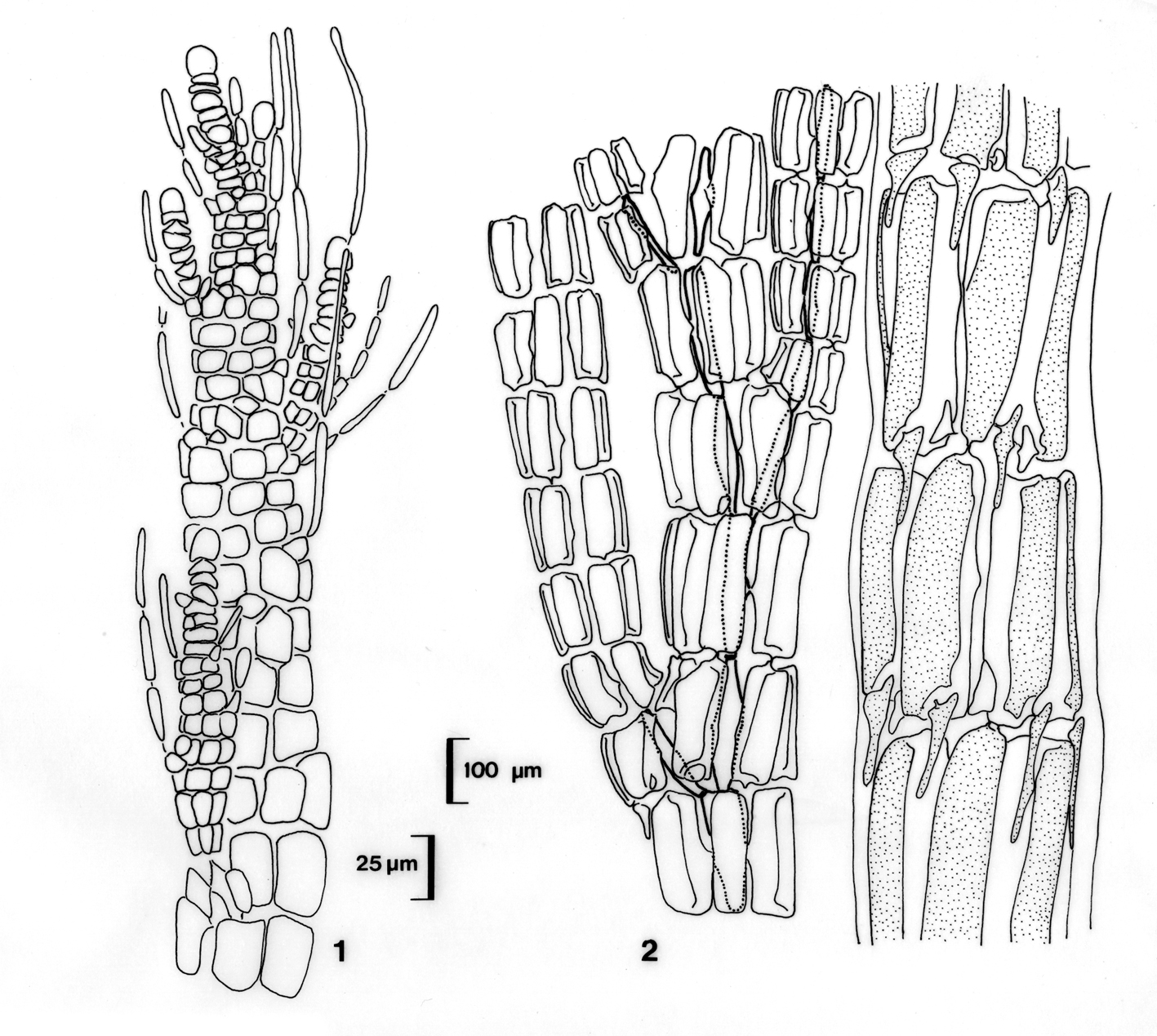
Polysiphonia kowiensis. 1. Thallus apex. 2. Detail of older axis, showing beginning cortication. (Reproduced from Stegenga et al. 1997).
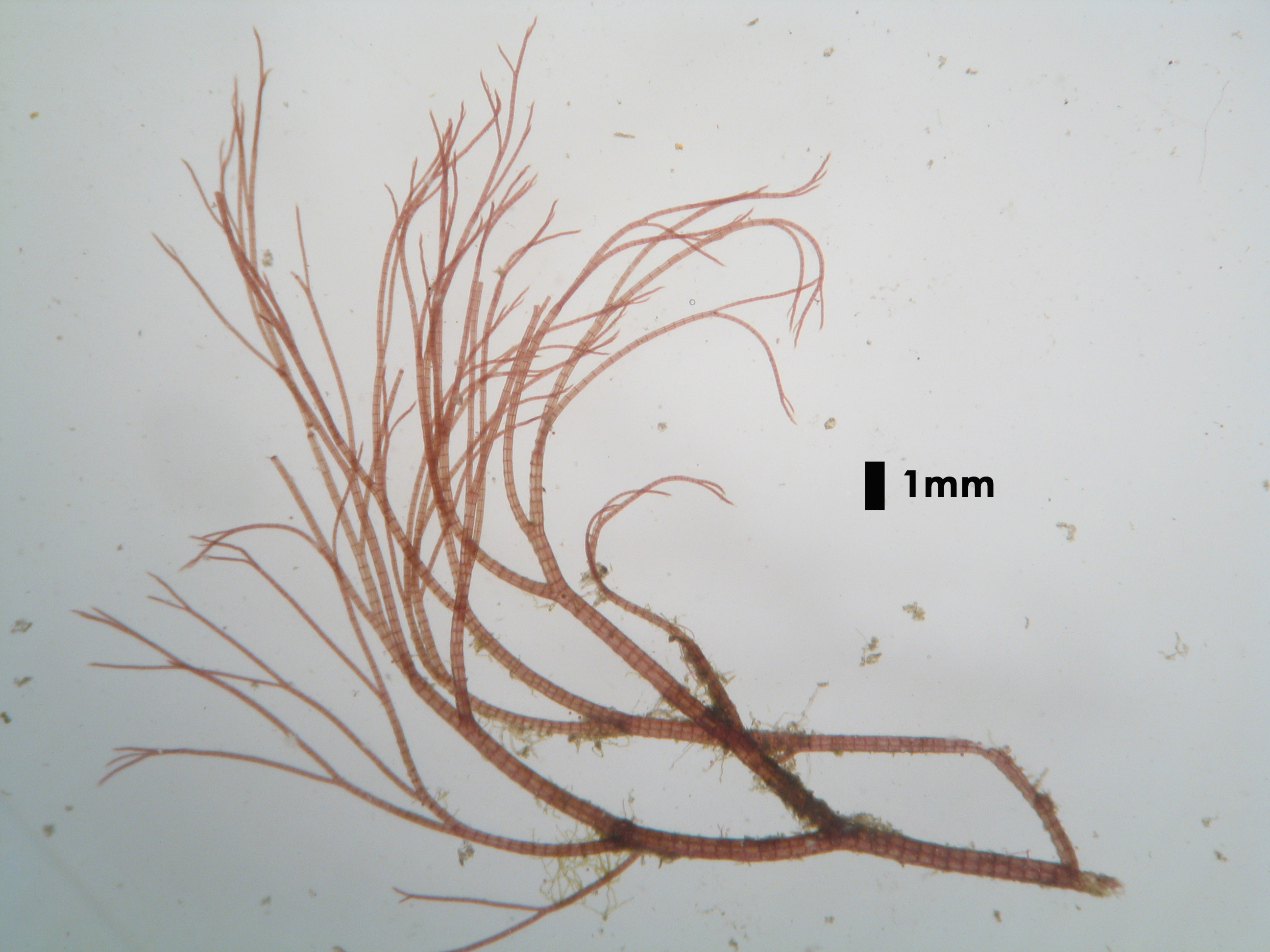
Polysiphonia kowiensis.
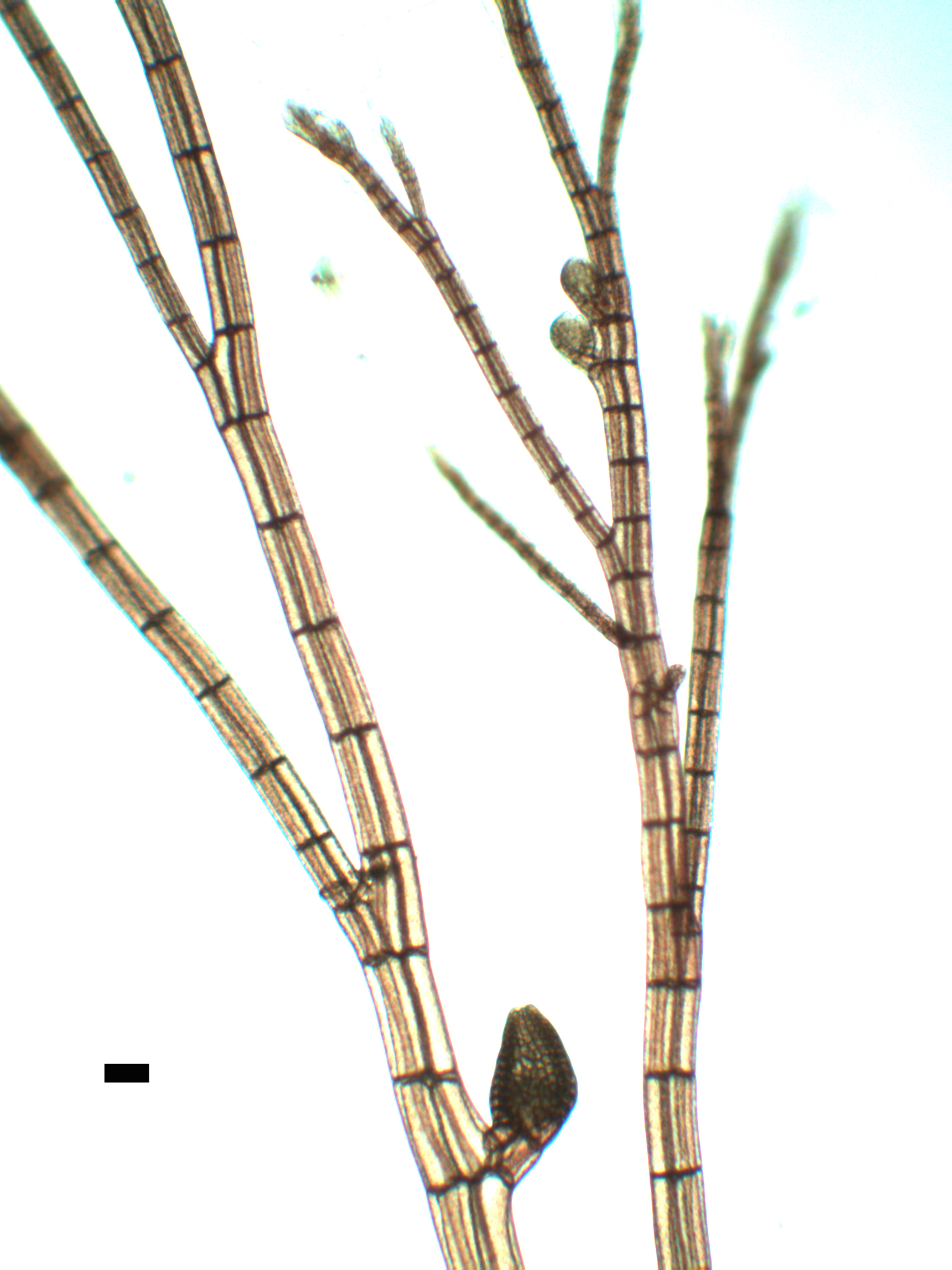
Polysiphonia kowiensis. Young cystocarps.
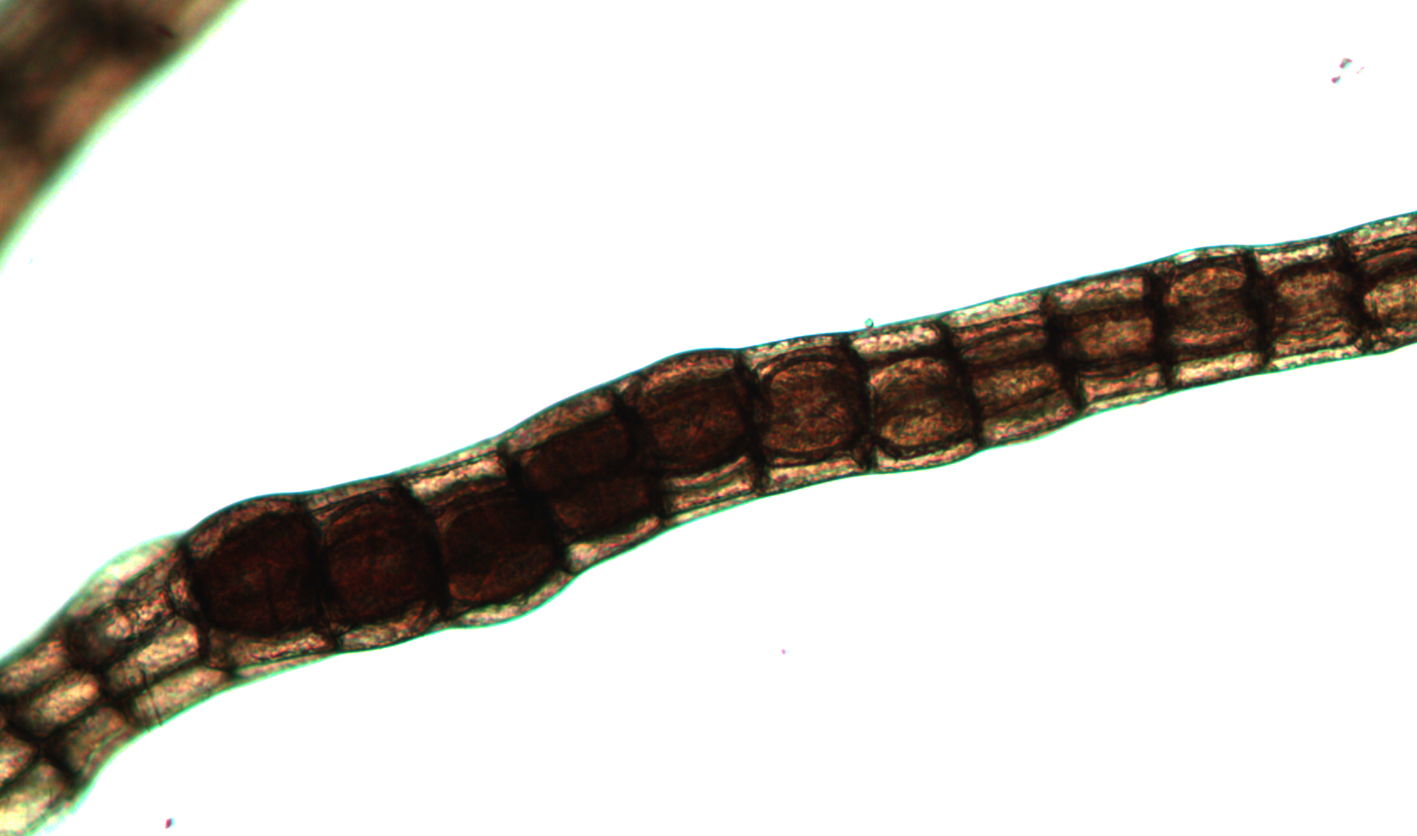
Polysiphonia kowiensis. Tettrasporangia.
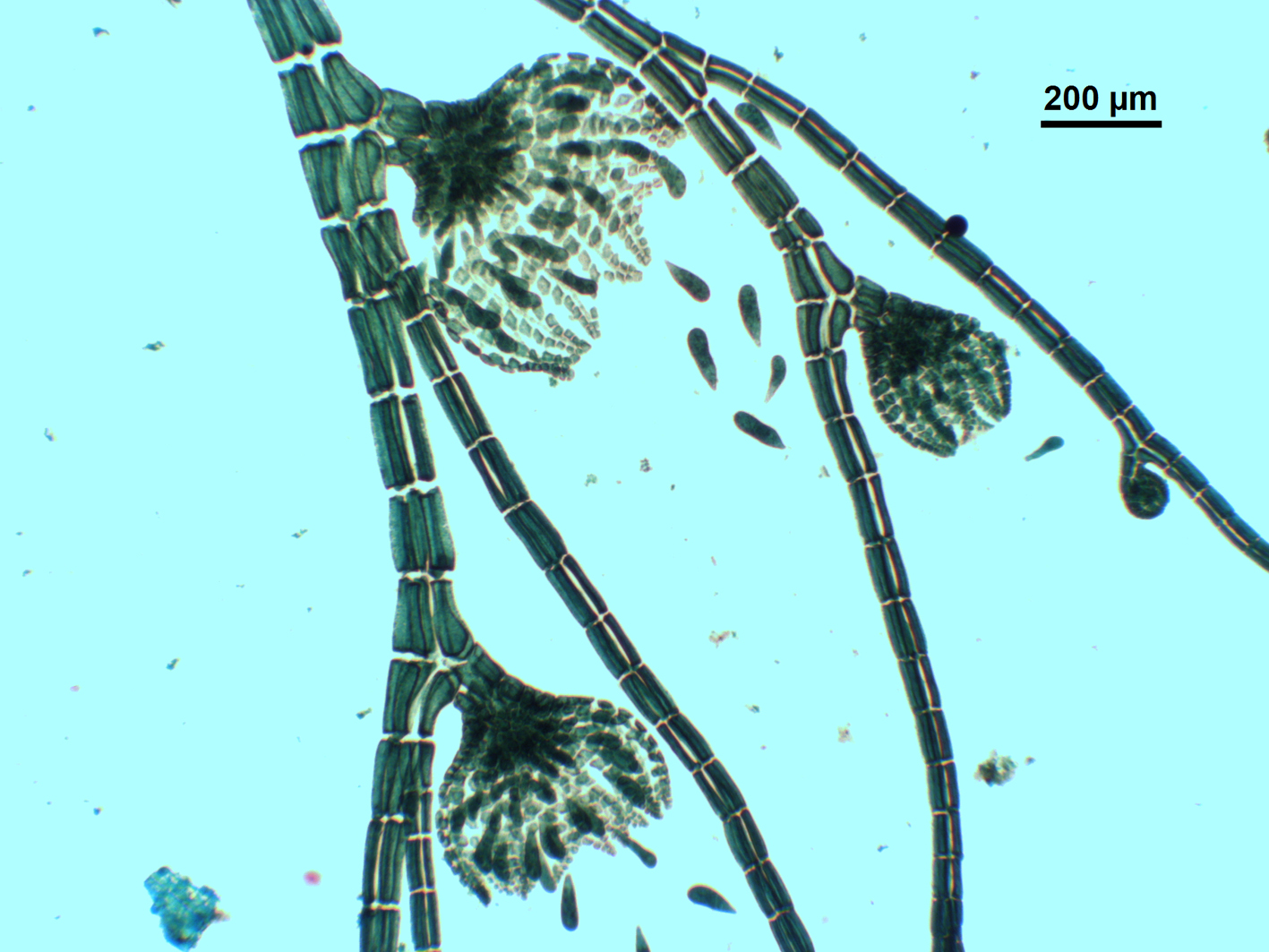
Polysiphonia kowiensis. Mature cystocarps (stained slide).
References Polysiphonia kowiensis
Stegenga, H., Bolton, J.J. & R. J. Anderson. 1997. Seaweeds of the South African west coast. Contributions from the Bolus Herbarium 18: 655 pp.
Cite this record as:
Anderson RJ, Stegenga H, Bolton JJ. 2016. Seaweeds of the South African South Coast.
World Wide Web electronic publication, University of Cape Town, http://southafrseaweeds.uct.ac.za; Accessed on 07 January 2026.